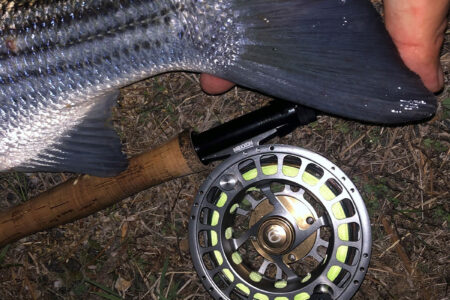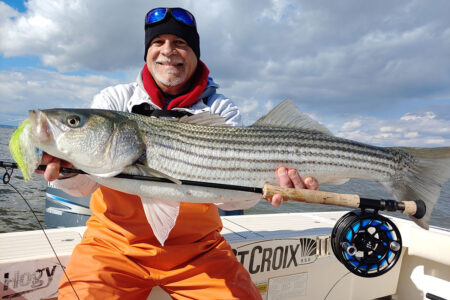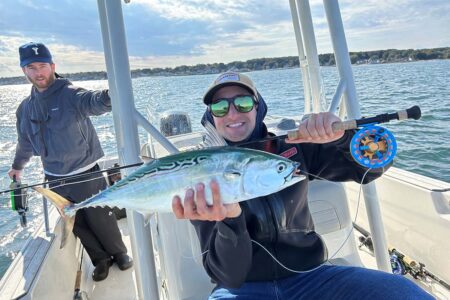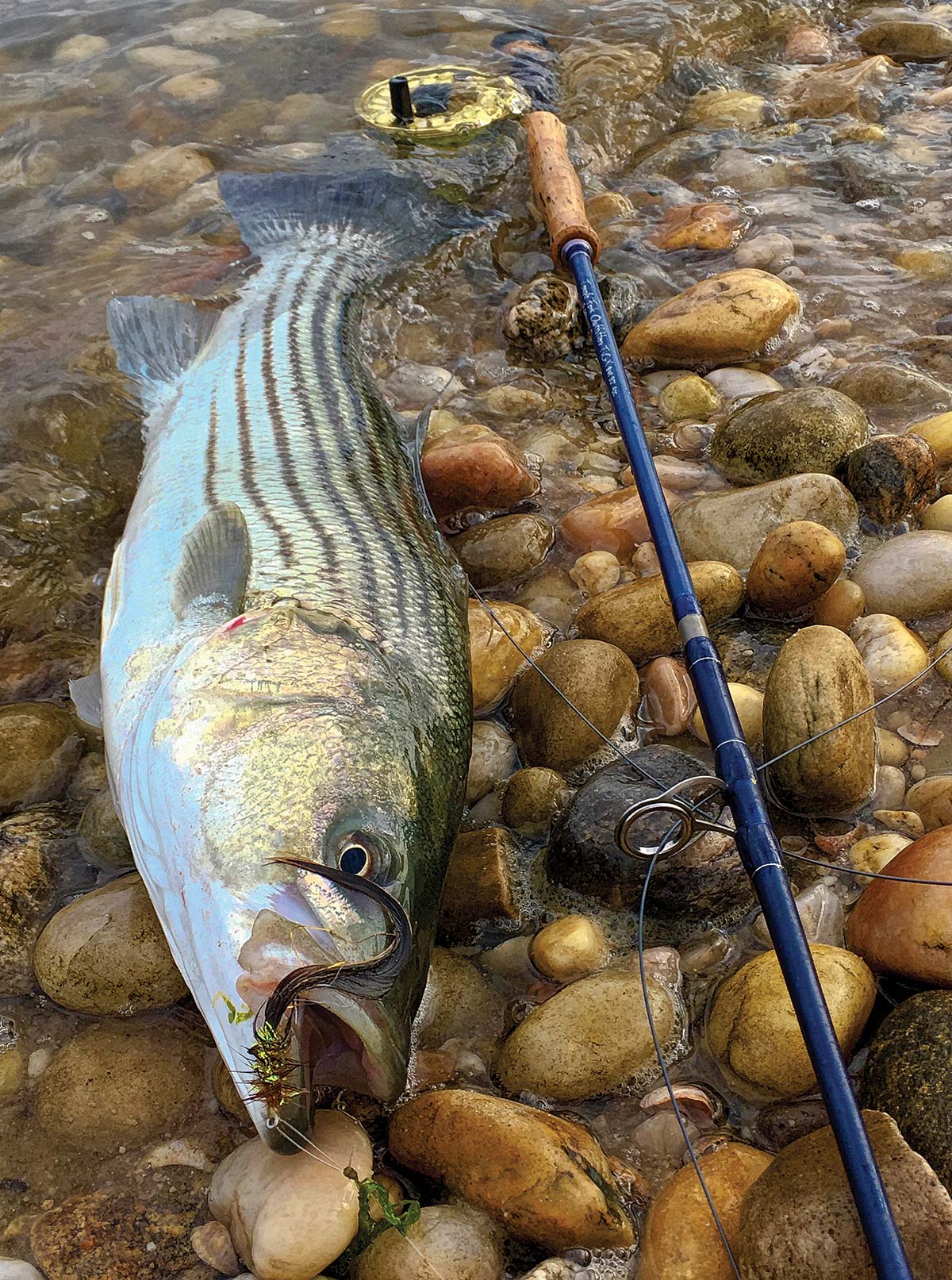
You’ve heard of the best but what about the ones you haven’t heard of?
Over the course of researching and writing four fly fishing books, including two fly pattern volumes I have had the opportunity to examine approximately 1,200 saltwater flies used by anglers from Maine to Florida. One key observation made from that review is that there aren’t very many truly original fly creations out there, but rather multitudes of modifications and variations of tried-and-true innovative designs.
A case in point is Lefty’s Deceiver, an iconic baitfish pattern created by an even more iconic fly fishing legend, the late Bernard “Lefty” Kreh. The Deceiver is fundamentally a fly pattern that can be tied to replicate a wide variety of baitfish. It is considered more a style or “school” of tying as opposed to being a specific fly. At the time I wrote Saltwater Flies of the Northeast there were more than 100 variations of the Deceiver for sale commercially. While there is certainly flattery in imitation of the primary design, that does not make the final variant an original. But in the final analysis, that diversity is what makes the art of fly tying so intriguing.
Interchangable Uses
All tyers build upon the creativity that came before them. New tying materials, new techniques and greater visibility of the art through the internet and various social media outlets have all contributed to world-wide innovation in fly tying. The net result is a veritable plethora of new and exciting flies that have applicability regardless of where you fish or for what species you fish. A further example of that trend is the Crease Fly, a very novel fly created by Long Island’s own Capt. Joe Blados. The Crease Fly was created for local and regional Northeast fish species, but it has been embraced, modified, and fished throughout the world in both freshwater and saltwater.
Another intriguing aspect of this broad universe of flies is the transferability of many fly patterns from one region of the United States to another, and even from one country to the next. The same is true for flies used for a plethora of diverse game fish. For example, striped bass can often be caught on many patterns designed for redfish and snook; Pacific salmon can be caught on flies used primarily for striped bass; weakfish are very receptive to on sea trout flies; and freshwater trout and bass flies will perform admirably when adapted to match saltwater baitfish. The list of possibilities is quite extensive, and almost endless. Most notably, many fly patterns designed for use in the Southeast and Gulf Coast regions are outstanding choices for use in the Northeast, especially for species like striped bass, fluke, bonito, little tunny, weakfish and Spanish mackerel.
The following flies might not yet ring any bells in the minds of some Northeast anglers but they are sure to ring the diner bell for the game fish they target. These are just a small sampling of other regional flies that have application in the Northeast. Aside from their colorful names, these flies are proven as effective producers regardless of where they have been fished. Give them a try locally. The results will be rewarding and the patterns will open up an entirely new world of fly tying and fly fishing opportunities.
Goony Critter
Created by Capt. John Turcot for Florida’s Mosquito Lagoon redfish, the Goony and its variations are representative of any number of small crab or crustacean-like baits. It was designed to present a small fly in natural colors to actively feeding redfish. The “hybrid” nature of this pattern makes it an ideal choice when attempting to mimic any number of crab and crustacean baits. It is an excellent fly to use when sight fishing for striped bass, especially on shallow flats or otherwise skinny water, and when bass are “mudding” for a meal. Fish it slow and enticing on a floating or slow sinking tip with a 6-foot fluorocarbon leader and enjoy watching the “eat”.
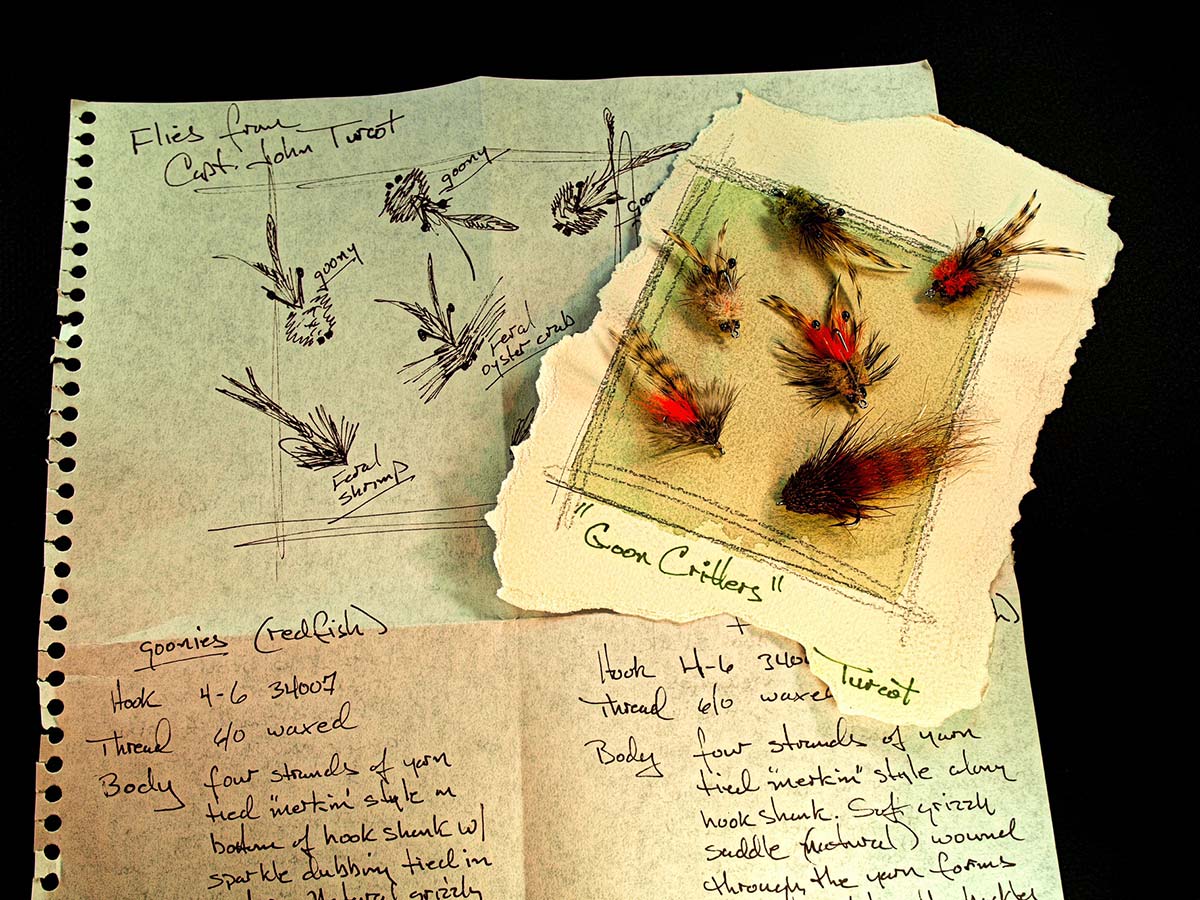
Hairy Fodder
This fly was designed by Craig Riendeau as a snag-resistant crawdad pattern for smallmouth bass in his Minnesota home waters. It has since evolved into an effective, all-around baitfish fly, and has been quite productive for an array of game fish, including striped bass, redfish, seatrout and summer flounder. By varying size and color combinations, the fly is adaptable to many fishing situations. Variations in size and overall dimensions can transform this fly into an impressionistic representation of an immature lobster or shrimp pattern. It can also be fished as a hybrid creature fly to represent a variety of small crabs and crustaceans. Retrieve the fly slowly along the bottom or twitch it on the fall for the best results.
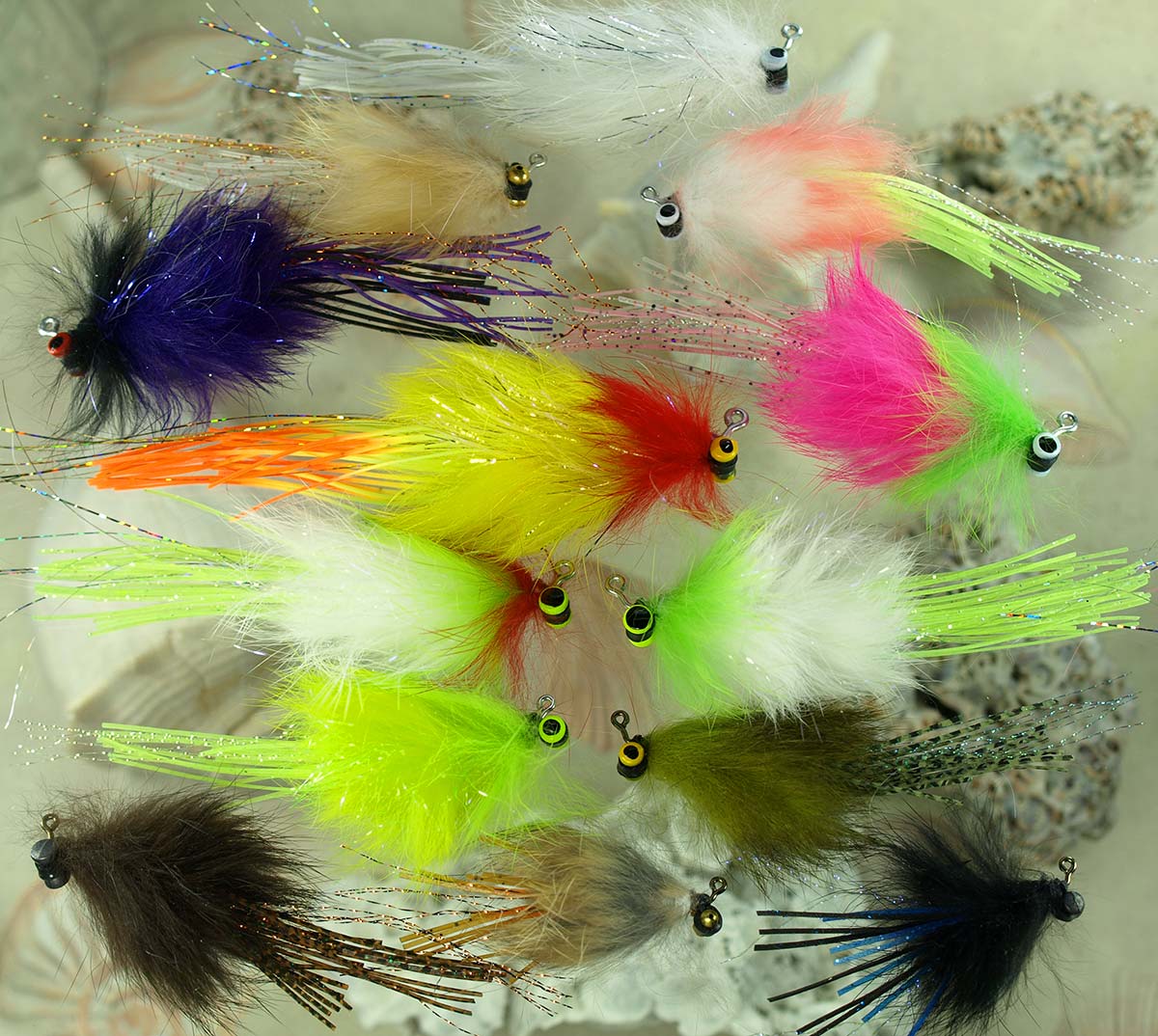
Hidalgo’s Red Med
Designed by Carlos Hidalgo for Florida Bay redfish, this seductive fly is sure to drive striped bass wild. The pattern incorporates many fish-attracting elements: bright and contrasting colors, flash, movement and a very buggy look. Weighted eyes allow the fly to be fished in a jig-like fashion and get to the bottom of the water column quickly. The blend of materials used in this fly gives it very seductive movement whether fished high in the water column or inched along the bottom.
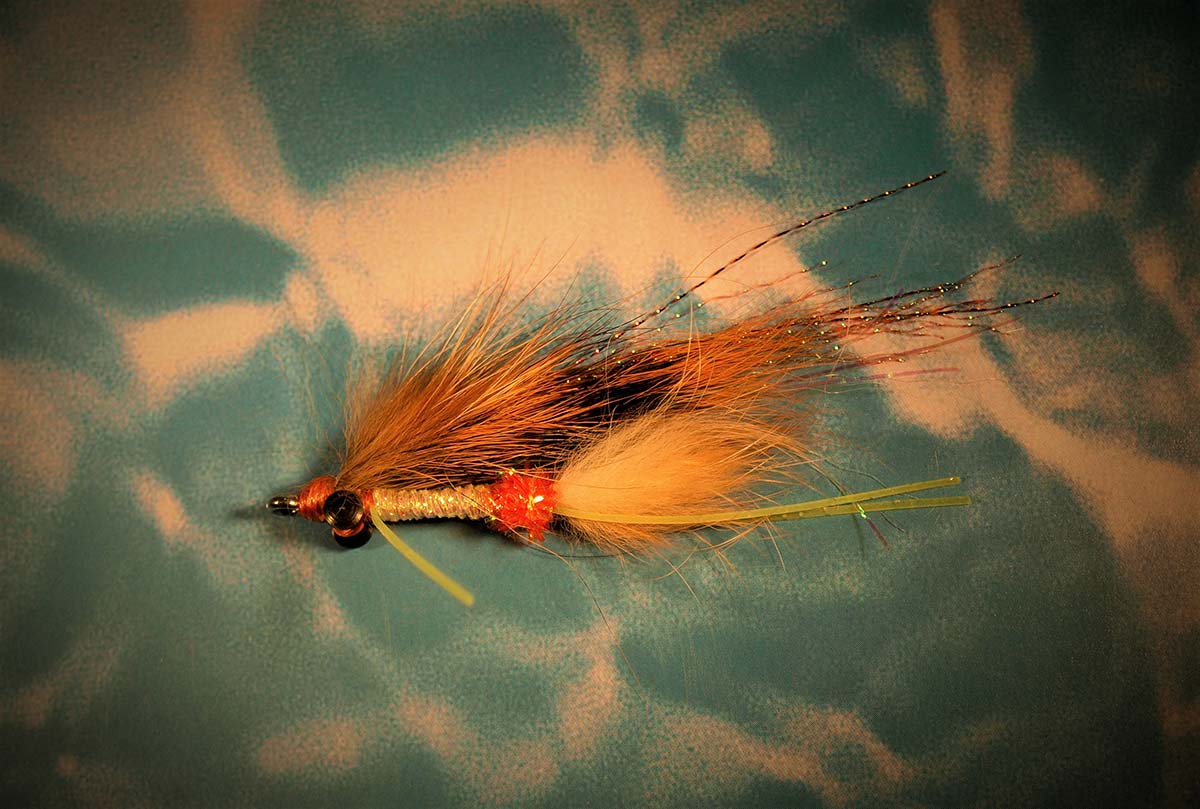
King Lepus
Developed by Tom Herrington of the Historic Ocean Springs Saltwater Fly Fishing Club, the King Lepus is an attractor pattern adapted from the success of the Sunrise Double Lepus, designed for cobia and tarpon. It was originally created for pelagic species such as king mackerel, wahoo, sailfish and bull dolphin. A prominent feature of the fly is it oversized eyes. The long, eel-like body of the fly makes it a wonderful pattern for striped bass. With the addition of larger barbell eyes, the fly can become a very effective dredging pattern for deeper bass. I once tied a variation of this fly in yellow and white that proved appealing to a 26-pound striped bass that was harassing a pod of hickory shad.
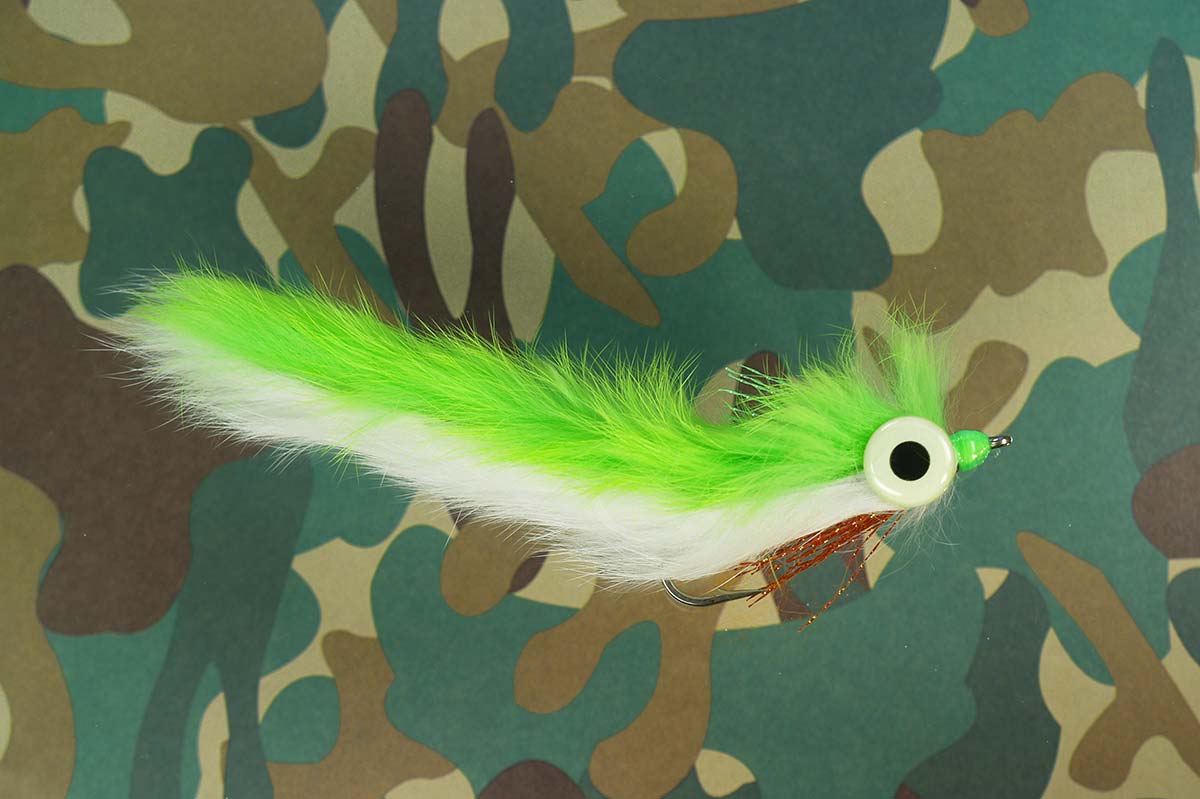
Mad Tom
This pattern is a Clouser Deep Minnow variation that was designed by Scott Leon and was originally tied for cobia in red and chartreuse. Since its inception, the Mad Tom has accounted for a wide variety of Atlantic and Pacific game fish. It is an especially productive pattern for striped bass. Heavily weighted in the late fall it works wonders on stacked bass. It is an easy pattern to tie and can be modified both in size and color. The rabbit tail and the jigging effect of weighted eyes makes for plenty of built-in action. By tying in a set of double barbell eyes and fishing the fly on a high-density fly line of 350 to 450 grains, the Mad Tom transforms into a deep-water searching pattern.
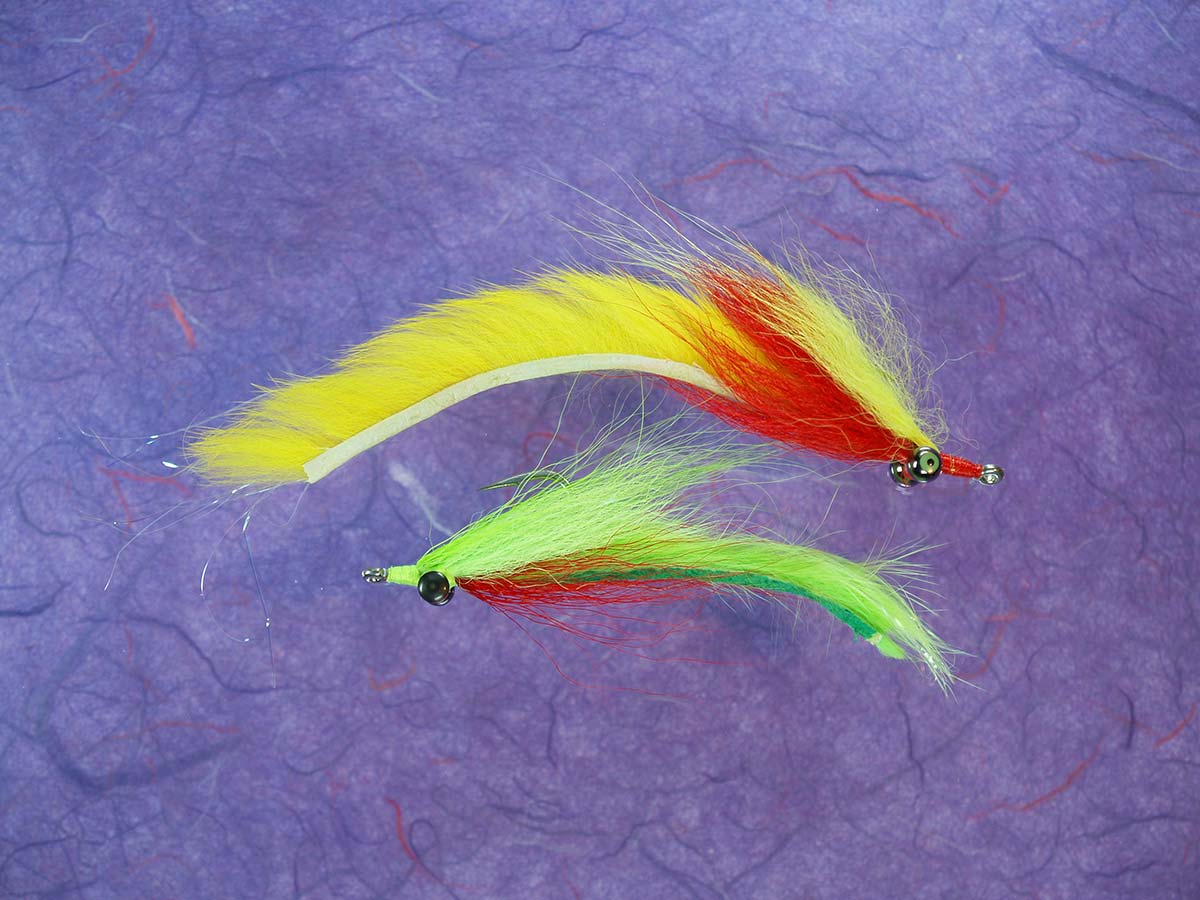
Fico Furbee
A creation of Dennis Ficco, this fly blends techniques developed by Enrico Puglisi’s use of materials and Henry Cowen’s use of colors in his baitfish patterns. That combination of attributes makes this highly productive pattern. The key ingredient in this design is the use of rabbit fur. The fly is a proven winner for dolphin fish, striped bass, sea trout, false albacore, Spanish mackerel and peacock bass. The Furbee can be modified in size and color to represent any number of small and/or wide-bodied baitfish.
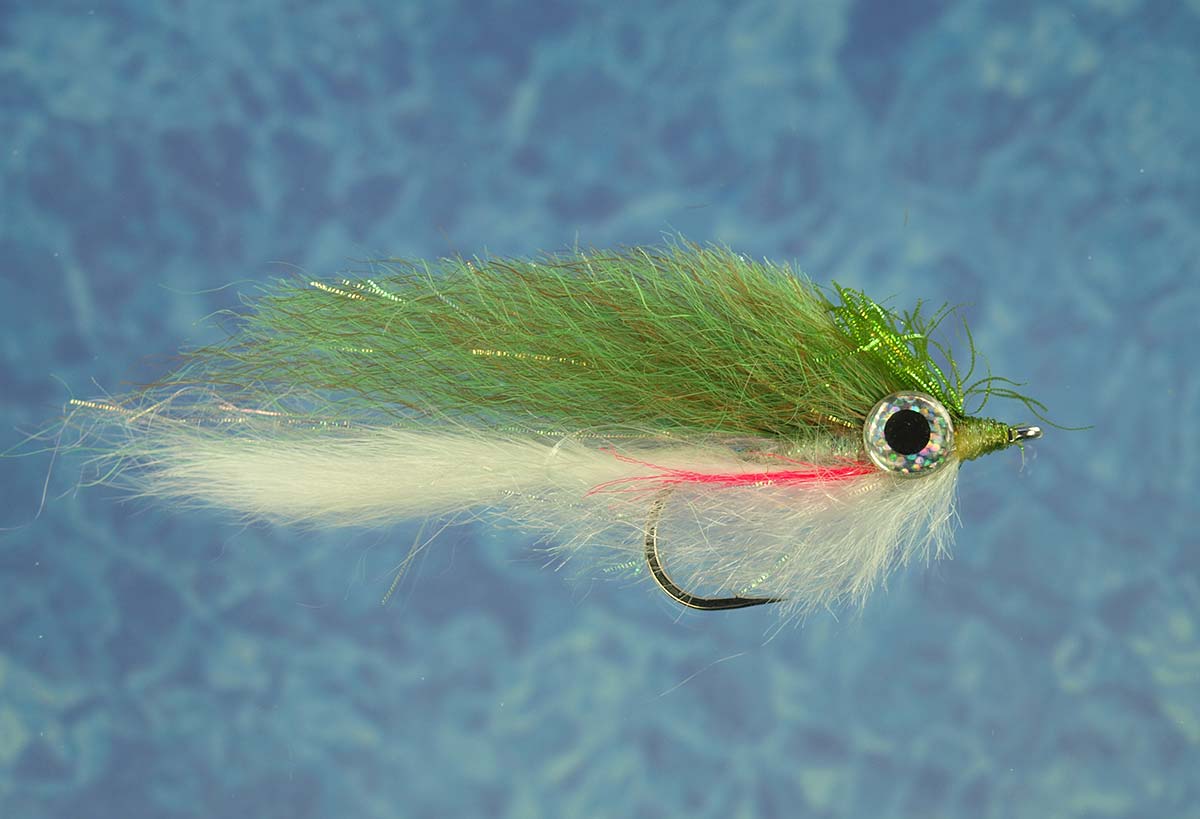
Wiggy Hi-Tie Baitfish
This Florida pattern was designed by Valerio A. Grendanin. The fly is effective at imitating large baits like blue runners or bigeye scad. It is also a good choice for wide-bodied large Northeast baitfish like adult bunker and hickory shad. The design takes advantage of the non-water absorbent qualities of Kanekelon Wig hair. It generates enticing action while maintaining its shape.
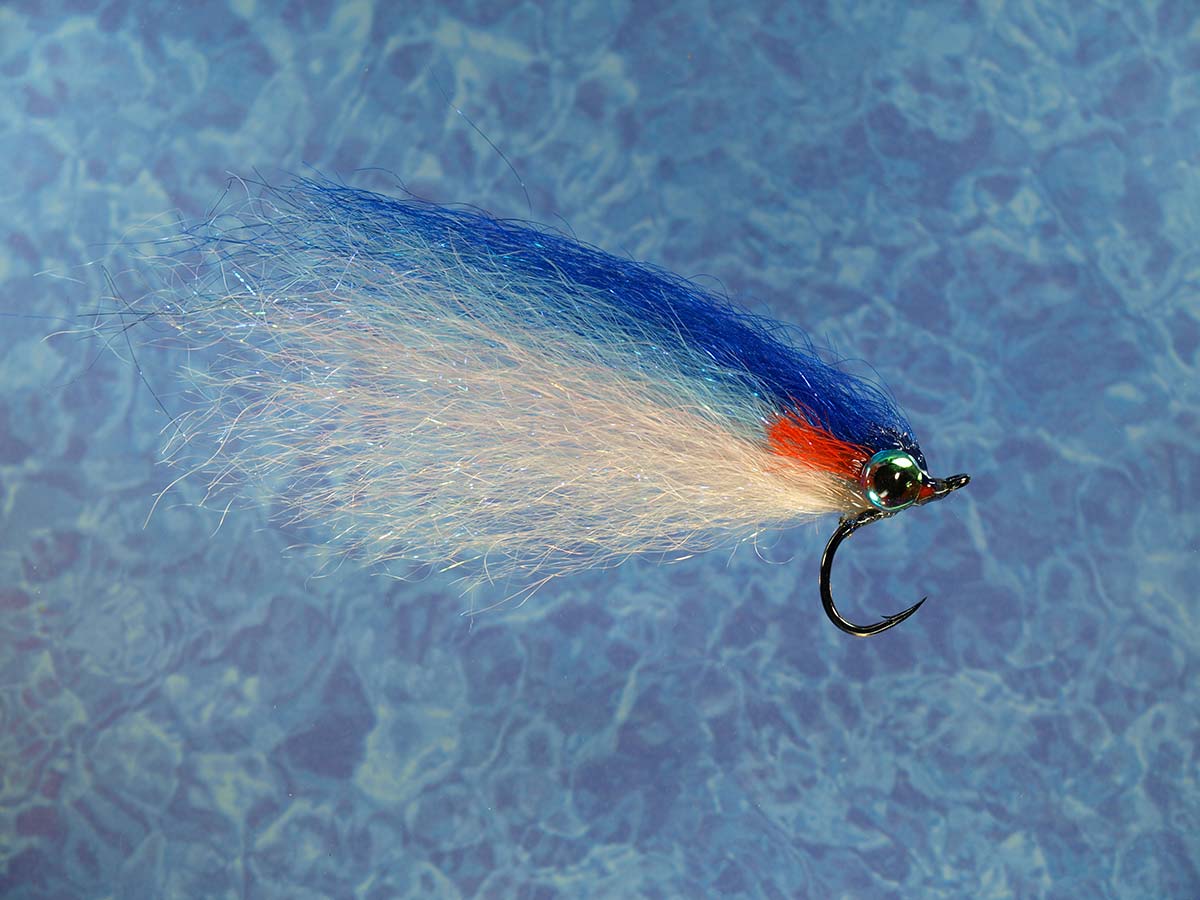
Borski Bunny Slider
Well known to anglers who fish the Southeast and Gulf states, this impressionistic pattern is one of a series created by Tim Borski. The fly represents a variation of the Borski Bonefish Slider and suggests a number of baitfish and crustaceans. It has accounted for redfish, bonefish, snook, steelhead and carp, and performs well for thin water striped bass feeding on crustaceans.
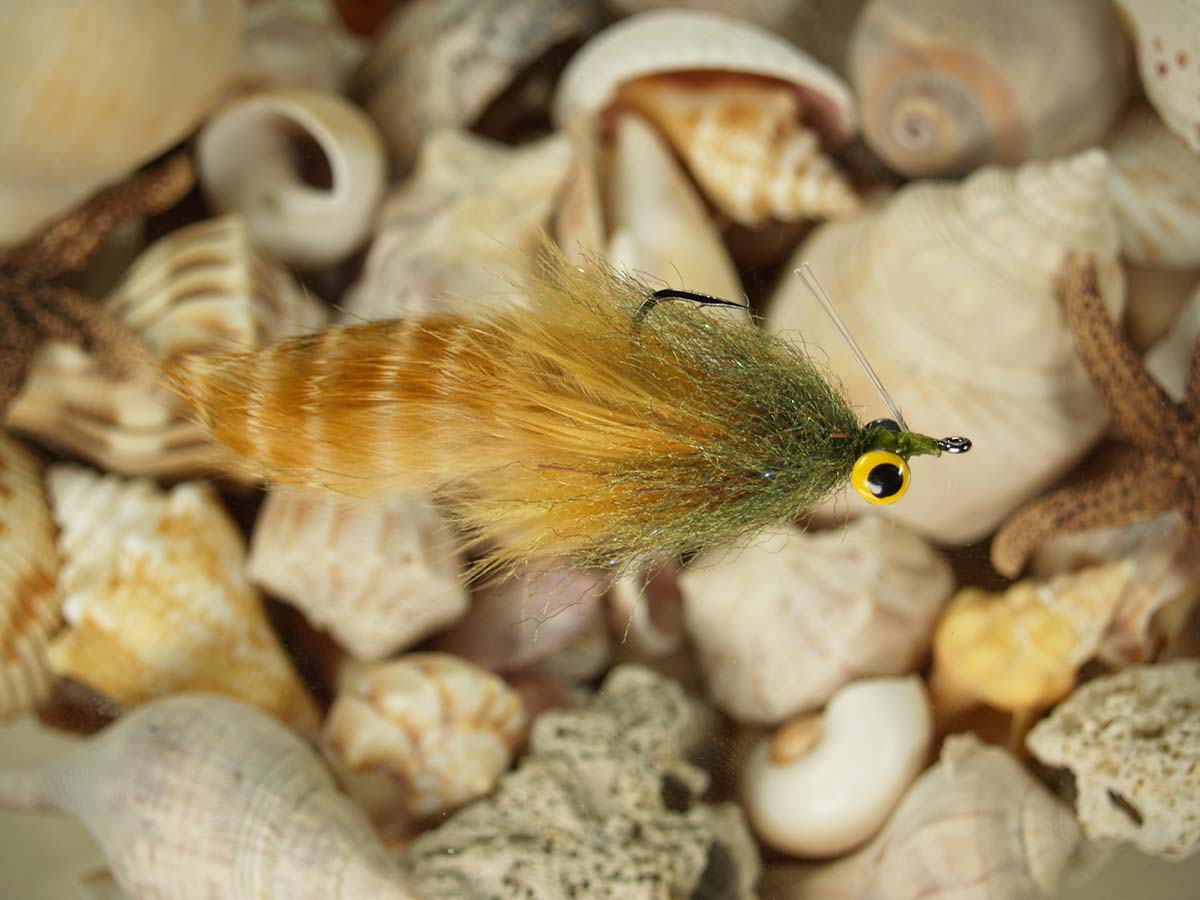
Little Black Nasty
Capt. Nick Angelo designed this redfish fly as a modified version of the well-known Toad Fly used for tarpon. The fly incorporates bead-chain or barbell eyes for additional weight. Sili-Legs have also been added to provide additional movement and action. The all black body with accents of chartreuse act as an attractor for redfish and black drum. This fly also works well for striped bass in dark or slightly stained water, and when feeding on crabs. The pattern is intended for use in shallow water. If you are casting to tailing fish, position the fly as close to the fish as possible. For fish cruising through shallow sand holes, lead them a few feet. Fish will often strike the fly on the fall. If a curious fish approaches the fly and hesitates to take, impart some subtle movement with a short pull of the fly line.
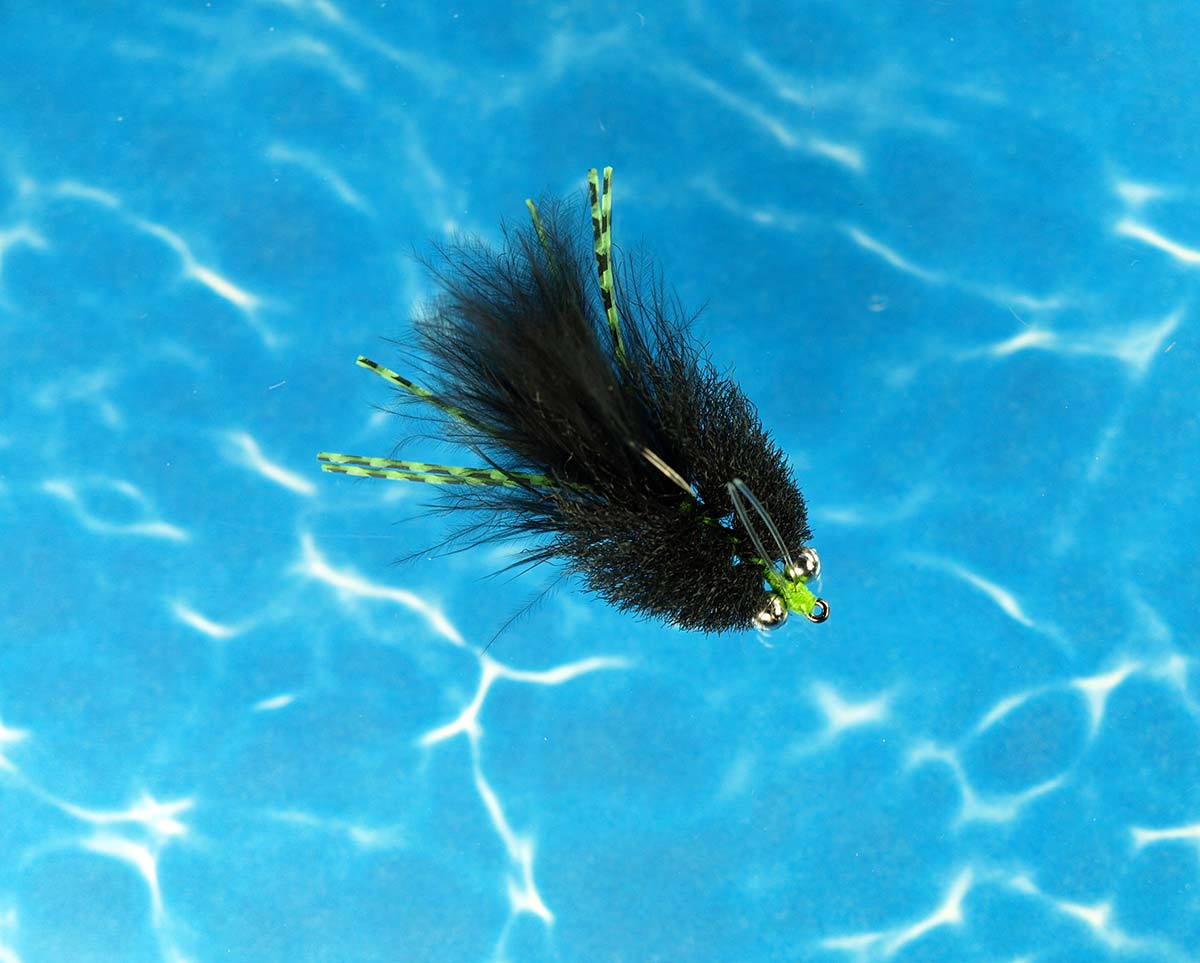
Blind Chicken
This fly is the creation from Capt.Billy Trimble for use throughout the entire range of the Texas Gulf Coast. The pattern represents small crabs and crustaceans and can be tied in a limitless array of colors. The original fly was tied in pink over chartreuse. While it has accounted for numerous game fish species, it has been especially effective for redfish and is an excellent cross-over pattern for sight-casting to striped bass. By alternating colors, this fly can serve as an impressionistic sand flea pattern.
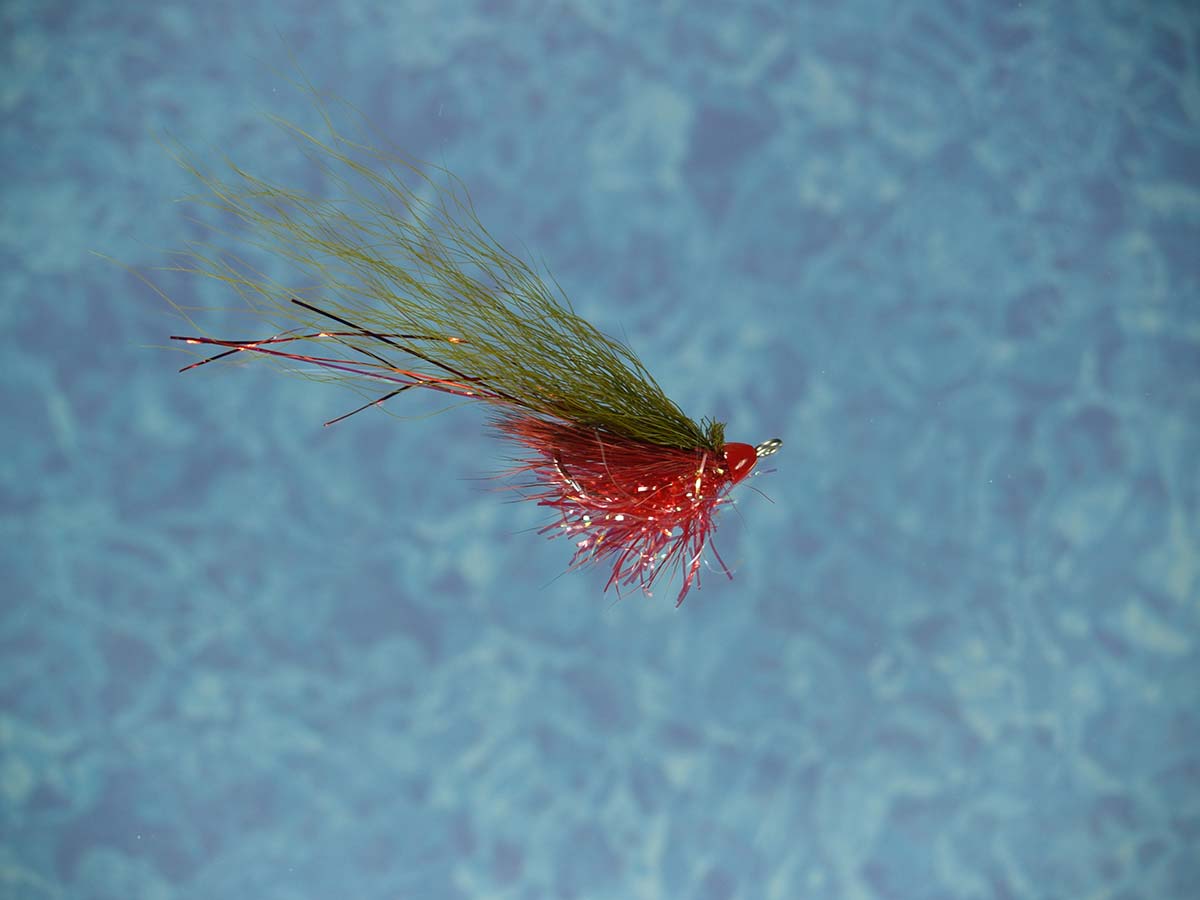
Fuzzy Flash Bunker
This fly was designed by Capt. Chris Newsome to imitate Atlantic menhaden. A combination of tying technique and specific material allow for a high profile pattern without adding excessive bulk to the fly. It can be tied from 3 to 12 inches long to match the size of the prevalent bait. The fly can also be used any time fish are keyed on high profile baits like bunker, spot, shad or pinfish. The fly has accounted for many species of game fish including: striped bass, speckled trout, summer flounder, bluefish, gray trout, red drum, cobia, snook, tarpon, jacks, barracuda, kingfish and tuna.
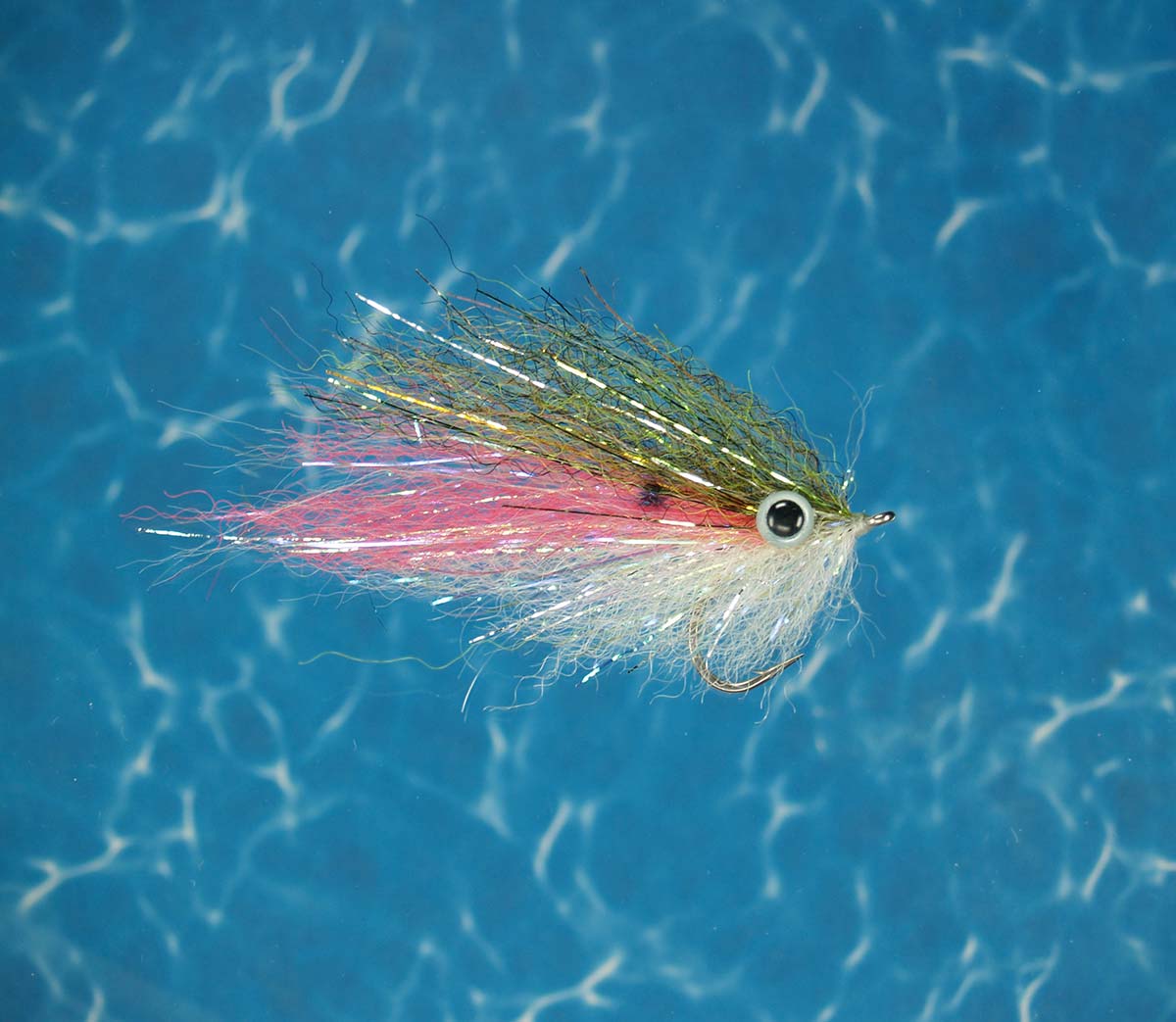
Baker Minnow
Part of an effective series of flies, this pattern is the creation of John Baker. The fly is a generic minnow imitation that can be used to replicate various small to mid-sized baitfish in freshwater and saltwater. It can be tied in many color combinations. Some of the more productive color presentations are: redfish orange; golden tan; purple; hot chicken; and chartreuse over white. This is an excellent back-country or back bay fly and has more than 25 species of gamefish to its credit.
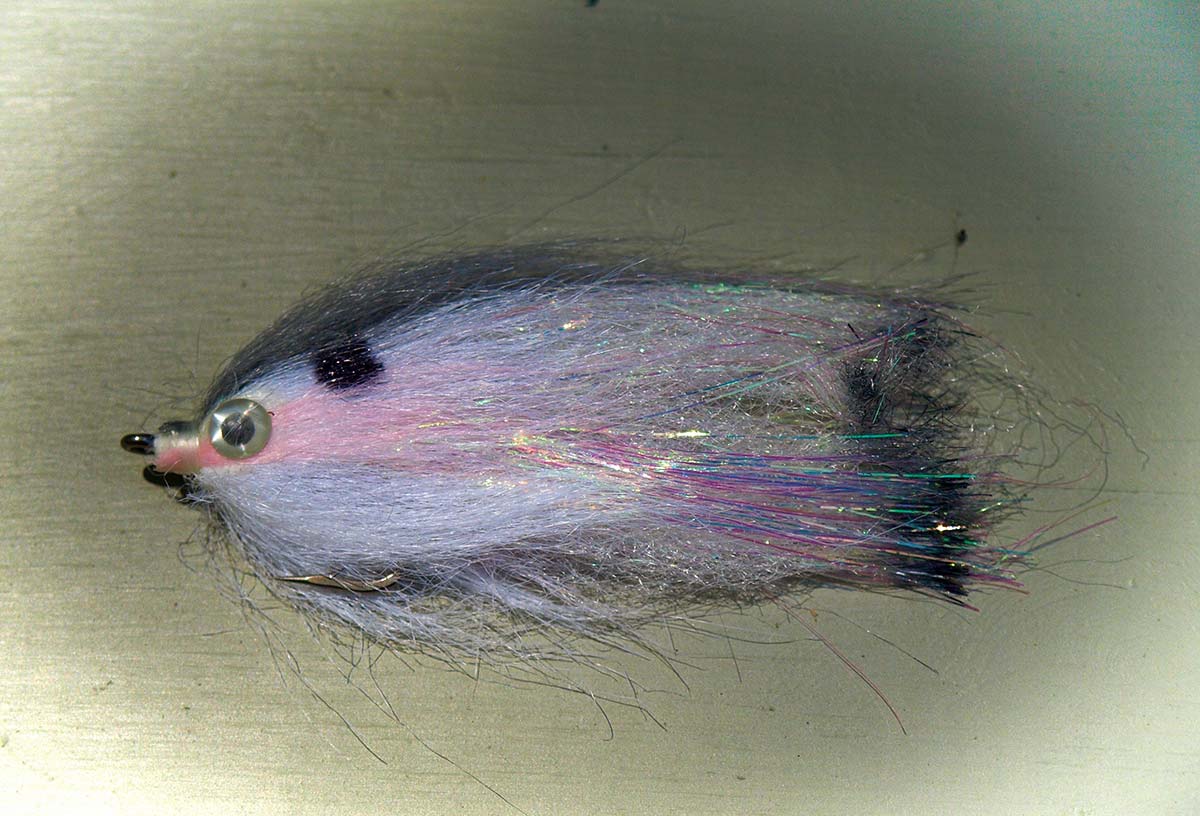
The flies profiled in this article and many others can be further accessed from the author’s two books: Saltwater Flies of the Northeast and Saltwater Flies of the Southeast and Gulf Coast.
If what you read here interests you and you want to give tying these productive flies a shot, visit here for an exclusive look at recipes on how to do it yourself.

